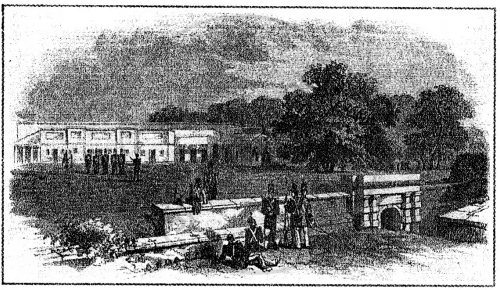Advertisements
Advertisements
प्रश्न
Match the Column:
| Column A | Column B |
| 1. Subsidiary Alliance | (a) Ruler of the Sikh kingdom |
| 2. Hyder Ali | (b) paramount power in India |
| 3. Ranjit Singh | (c) Ruler of Mysore |
| 4. The doctrine of Lapse | (d) Lord Wellesley |
| 5. English East India Company | (e) Lord Dalhousie |
उत्तर
| Column A | Column B |
| 1. Subsidiary Alliance | (d) Lord Wellesley |
| 2. Hyder Ali | (c) Ruler of Mysore |
| 3. Ranjit Singh | (a) Ruler of the Sikh kingdom |
| 4. The doctrine of Lapse | (e) Lord Dalhousie |
| 5. English East India Company | (b) paramount power in India |
संबंधित प्रश्न
State whether the following is true or false:
The Carnatic Wars were fought between the British and the French.
Answer the following question in one or two words/sentences:
Why did the British fortify their trade settlement in Calcutta?
Fill in the blank:
Jhansi was annexed by Dalhousie on the basis of the __________.
After Hyder Ali’s death, his son Tipu Sultan continued the Anglo-Maratha Wars.
Answer the following question briefly:
Dalhousie was a great expansionist and adopted a number of methods to build an all-India empire. In this context, answer the following question:
Under what circumstances did a subordinate state automatically ‘lapse’ and pass into the hands of the British? How did the rulers react to this policy?
Answer the following question briefly:
With reference to the annexation of Awadh discuss:
The effects of the Subsidiary Alliance on the administration in Awadh

Mention the terms and conditions under the Doctrine of Lapse method.
This is a picture of a fort built by the British.

When did the British purchase the three villages to develop into a city? Also, name the villages and the city.
This is a picture of a fort built by the British.

Write a short note on the establishment of British factories in India.
Answer the following question:
State very briefly why the Marathas failed against the British.
